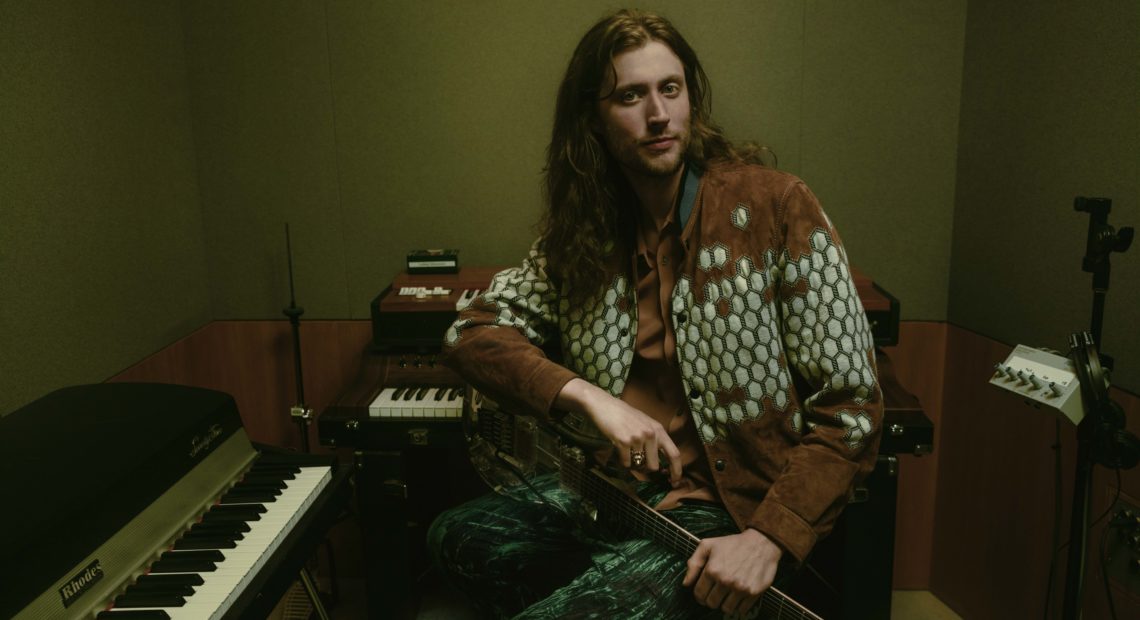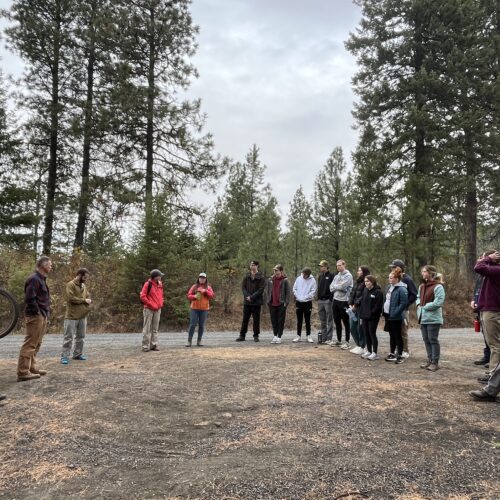
How A Swede Named After Beethoven Helped Orchestrate America’s Race Conversation
Only in America. Where else could a Swedish composer named after Beethoven help soundtrack a cinematic year of blaxplaining and black magic that held the whole world captive? This irony hit home last week, as I watched Ludwig Göransson ascend to the Grammy stage to accept one of a trio of awards earned for his musical contributions to Childish Gambino’s audiovisual gut punch “This is America” and Ryan Coogler’s superhero blockbuster Black Panther.
When we’d spoken by phone several weeks earlier, we’d talked a lot about music and his process. But I’d found myself struggling to engage him in a conversation about race, the same conversation this country’s been awkwardly attempting and evading for the last half-century or so. I, too, danced around the topic a few times without ever point blank asking him how it felt, as a white guy from foreign soil, to have played such a pivotal role in shaping and reframing the conversation around racial injustice and black empowerment in 2018 through both of those major works.
He spoke of the pressure he felt to get it right, to help bring the art to life without compromising the message. Indeed, there’s a long history of white folks with the best intentions compromising black culture. Though the bigger crime, more often, is the failure to recognize its significance at all.
style>.embed-container { position: relative; padding-bottom: 56.25%; height: 0; overflow: hidden; max-width: 100%; } .embed-container iframe, .embed-container object, .embed-container embed { position: absolute; top: 0; left: 0; width: 100%; height: 100%; }
Download or fork on Github. Please Embed Responsively.
This weekend at the Oscars, Black Panther is nominated for best original score, which means Göransson could win big again. But the real win to Göransson, who began working with both Coogler and Donald Glover (a.k.a. Childish Gambino) shortly after he arrived in America at age 22, is that the rest of the world is finally recognizing what drew him to their respective talents a decade earlier.
“We’re not doing anything different than we did 10 years ago,” he told me before the Grammy telecast. “We’re still doing the same thing. People are just listening to it in a different way.”
That’s a huge understatement considering the groundbreaking impact of these dual works, and, in some sense, dueling worldviews. While “This is America” features a black anti-hero forcing America to confront its racial horrors, a black superhero desperately attempts to reconcile that tragic undoing in Black Panther. Both are girded by music that shakes off centuries’ worth of shackles, and Göransson is the link between the two. He’s distinguished himself as an ally among his creative peers in an entertainment industry historically hellbent on exploiting black talent. In an era where white artists and producers, from Ariana Grande to Diplo, are frequently called out as cultural appropriators, Göransson is a true collaborator — even when the creative demands require him to take a cultural leap, quite literally, across seas.
The story of Göransson’s path to scoring two of 2018’s most popular and politically-charged works began with a pair of encounters with Coogler and Glover before either of them were household names.
“We met at a party,” Göransson says, recalling his first conversation with Coogler over a game of pool at the house Göransson shared with roommates when both of them were students at USC. “One of the first things he started talking about was Swedish music, artists like Lykke Li and Little Dragon. I was like, ‘How do you know about these guys?’ Then we started talking about film, so it was a friendship before we started working together.”
Their connection led to Göransson scoring an early student film by Coogler. A six-minute short with no dialogue, Locks relied on sound effects and a score composed by Göransson to convey the emotional arc. “I did a lot of student films at USC, and this one was just on a completely different level,” he says.
Donald Glover made a similar first impression on Göransson. After meeting on the set of the NBC sitcom Community, where Glover was plying his trade in front of the camera while Göransson composed for the series, the two began working on the songs that would comprise Glover’s mixtape outing, Culdesac, as Childish Gambino. “When I started working with him on Culdesac, and then [his studio debut] Camp, I always had that feeling like, ‘Oh man, this is the best thing I’ve heard; this is the best thing I’ve worked on,'” Göransson, whose been an intrinsic part of every Childish Gambino project since, says.” It was such an inspiration.”
Hip-hop was not Göransson’s first language. The earliest introduction to the genre he can recall came by way of Foxy Brown’s Chyna Doll, a CD he remembers taking from his sister’s collection while growing up in Sweden. Though guitar shredding music was his thing at the time, something about the album’s aesthetic drew him in. “It had Middle Eastern, kind of Arabic production to it,” he says. “I just remember really falling in love with the album.” Beck’s funk and R&B pastiche Midnite Vultures, also out at the same time, was another early favorite. “I definitely heard the connection between different musical styles even though the artists were so extremely different.”
His affinity for cultural sampling defines Göransson’s approach as a composer and a producer. Whether he’s sourcing sounds or creating mashups — sprinkling Bach-inspired strings over 808 bass — each experimentation is steeped in postmodern sampling techniques like the kind found in everything from musique concrete to hip-hop.
Both Glover and Coogler must have recognized his gift for translating their visions into sound. For Göransson, that work starts simply with conversation. “I think I’m a pretty good listener,” he says. “When Ryan is telling a story or when Donald is telling a story, I’m always listening. And I think I’m maybe pretty good at listening to them [and] being able to translate it into notes.”
When Coogler returned to Oakland to make his first feature film Fruitvale Station, about the police killing of Oscar Grant, Göransson recorded sound from an actual BART station, where Grant was shot on the train platform, to incorporate into the score as musical elements. In each subsequent major release of Coogler’s, Göransson sourced environmental sounds to incorporate into the score. For Creed, he visited a Philadelphia boxing gym.
But when Coogler approached him to soundtrack the fictional African utopia Wakanda for Black Panther, he “had no clue about how he was going to score the movie,” Göransson says. He just knew it had to be authentic. “One of the first conversations that me and Ryan had was, ‘How can we use as much inspiration from African music?'” After researching West African music online, he got Senegalese musician Baaba Maal’s number through a friend and member of the band Mumford & Sons. Maal immediately invited Göransson and his wife to join him on tour in Dakar. When they arrived at the first show in a small village, it was 3 o’clock in the morning. The concert started an hour later.
“He opened up the whole show by walking out on the stage in traditional clothing. It’s a very ceremonial feeling. It was just solo vocals with the piano,” Göransson says. “I’d been traveling for three days, but when I heard him it was sort of a religious experience. I was like, ‘Oh my god, I want to capture this feeling in the film.'” After his last week in Senegal, Göransson had a recording session with Baaba Maal. “Wakanda,” the resulting piece, “really captured the feeling of how [Baaba Maal] started his concerts.”
The music in Black Panther is more than mere backdrop. It authenticates the narrative. Instead of a colonized version of Africa, viewers get an unfiltered world of its own. “One of the first things I want do when I start writing music for a film is to create its own sound world, its own music world,” Göransson, who also worked with Senegalese talking drum master Massamba Diop, says. “The music is there for a reason — for a ceremony or for ritual or for the challenge or for a funeral. So, how can we keep it true to the culture? That was something that we constantly talked about. And there is a bunch of those moments that we were able to capture in the film.”
That same cultural immersion played out in Göransson’s production of the last Childish Gambino album, 2016’s Awaken, My Love! Göransson was new to funk when Glover introduced George Clinton’s Funkadelic to him. The resulting album felt like a reawakening — for Childish Gambino and for the genre. For Göransson and Glover, it was an extension of their ongoing experimentation.
The bones of “This is America,” the newly Grammy-anointed song and record of the year, were actually laid before Awaken. They started writing the music in the studio one day, and Glover “just came out with the hook out of nowhere,” Goranson says. Another two years passed before they went back to finish the song. Ad-libs from trap artists ranging from Young Thug to 21 Savage — whom Göransson acknowledged from the Grammy stage, after the rapper had been detained by ICE on charges of overstaying a visa — were added later. But it wasn’t until he saw the video, directed by Hiro Murai, that Göransson really heard the song himself. The visual chaos and everything symbolized by a gun-toting Childish Gambino, dancing, shooting and dodging his way through the onslaught, made “This is America” a protest anthem full of layered meaning. “I’m, like, hearing this stuff I hadn’t heard before. I can’t speak for what Donald’s intent is when he writes the lyrics, but in so much of his work there’s just so many levels to it. That’s why you can listen to his music over and over and over again. That’s also what happened with Black Panther. There’s so much information, so many new things to discover.”
Working with Glover and Coogler has been a dream come true for Göransson. But helping two creators at the top of their game convey these deeper meditations on race and culture and the African diaspora is also “a tremendous pressure,” Göransson admits, especially when you don’t share their race or culture.
“I know that Ryan puts his trust in me, which is also a lot of pressure, but whenever I work on any of Ryan’s films, I always put a lot of pressure on myself. You just have to turn it into an inspiration and a positive energy to try to do the best I can in every way.”
As a creator operating in black spaces, he’s driven by his own convictions, but also his openness to others’ experiences. “No matter where you’re born or what country you’re from, you connect with ‘This is America,'” as he said while accepting the record of the year Grammy for “This is America” in Glover’s absence. “It speaks to people; it connects right to your soul. It calls out injustice, celebrates life and reunites us all at the same time.” Rarely do such overtly political works resonate as pop hits, but Panther, with a worldwide box office gross exceeding one billion dollars, and “America,” approaching half a billion YouTube views, are both commercial juggernauts. Göransson sees it as proof that Coogler and Glover are tapped into the cultural zeitgeist. As an outsider who contributed to the success of their most recent works, he also sees it as a growing hunger for their brand of truth.
“I see Ryan and Donald as really true. They’re a different type of artist. They always stay true to who they are, not trying to change anything [or chase] after a formula. And I think people in America today are just really tired of the same thing. They want to listen to something that’s really true and that doesn’t feel fake.”
Goransson, the innate listener that he is, wants the same thing. It’s a conversation he’s been engaged in from the very beginning.















